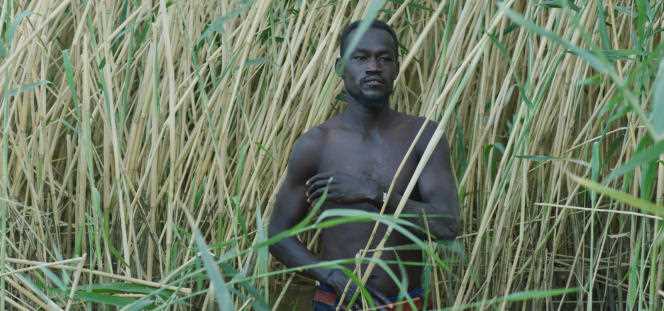DIRECTORS’ FORTNIGHT
To get to know a character, let’s start by looking at their gestures. The dam, by the Lebanese visual artist Ali Cherri, begins as in Tariq Teguia’s film, Inland (2008), alongside a man whose profession we discover: in Inland, a topographer in Algeria surveys, measures, apprehends a territory, for minutes, which he will then explore; in The dam, here is Maher (Maher El Khair), a worker in a traditional brickyard in Sudan, who shapes the clay, aligns the blocks, stacks them, in a controlled movement, repeated a thousand times.
Ali Cherri seizes the same choreography according to different, stunning shots, the geometry of the “cobblestones” lending itself to the exercise of beauty: colors of clay, silver sun, ignition of an oven like fireworks, jets of smoke coming out “valve” walls. When can they release the pressure? Bodies leaning, bent, lifting, then, finally, at rest, bathing in the waters of the Nile, washing off this grueling work. Below his back, Maher’s skin reddens and cracks, like parched earth. The camera becomes attached to his magnetic gaze.
Very telling silent shots
Born in 1976, in Beirut, marked by the war in Lebanon, Ali Cherri draws his stories from the history of conflicts, in the Middle East, in Africa, etc., is interested in the place of objects in the elaboration of national stories. In the background of Barrage, the uprisings in Sudan, the popular demonstrations against the high cost of living, which began at the end of 2018 and culminated, a few months later, in the fall of President Omar Al-Bashir, in April 2019. Snippets of the report, from a lit post , tell us that thirty-five people died during the dispersal of a demonstration. Maher and his comrades may be far away, they feel concerned, they who toil without stopping. Are they paid by the day, by the week, by the brick? Ali Cherri’s images do without dialogue, and his almost silent shots speak for themselves.
The facade of a white building bears these slogans: “Down with the military regime”, “Civil disobedience”. Maher knocks on a door to borrow a motorbike from a man he knows. Who hesitates, then ends up accepting. It is assumed that he likes to be asked and serves the same skit every day. The camera captures the motorcycle in a wide shot, on the roads, until the noise stops. Always ice cream. Maher needs his space, just for him. Is he trying to build something, some kind of small tower, or a vague figure to talk to? The camera captures another labor, solitary, as if in negative, only the shadow of the body projected on the wall under construction. We are as if in front of a huge statue of Giacometti, not walking man, but maybe The man with the finger. The film falls into a bluish night, in the vein of Apichatpong Weerasethakul. The reflections of the rock, in the water, produce grimaces, for the spectator to decipher them.
You have 4.29% of this article left to read. The following is for subscribers only.
